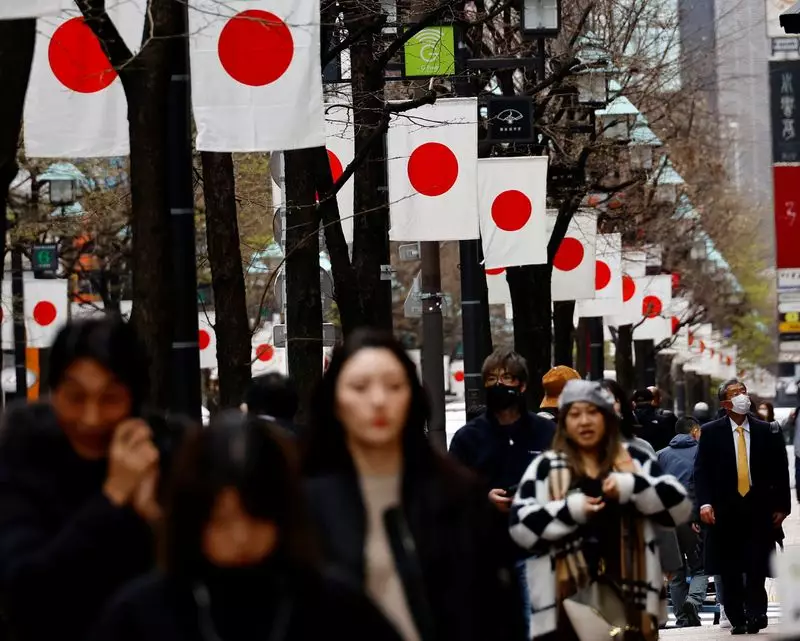Recent data from a quarterly survey indicated that Japan’s large manufacturers have experienced a slight uptick in sentiment as of December. This increment, moving the business confidence index to +14 from +13, is a positive sign for the Bank of Japan (BOJ), especially with its ongoing conversations about potential interest rate increases from the historically low near-zero levels. This uptick reflects a cautious optimism within some sectors, notably driven by a rebound in automobile production along with a robust demand for machinery, as companies gear up for increased capital investments.
However, this optimism somewhat camouflages underlying challenges. Despite the aggregate sentiment showing an improvement, there are significant concerns regarding rising costs of raw materials and labor which have strained retailers and other non-manufacturing sectors. This signals a divide in the overall economic landscape, where some industries are thriving while others struggle to navigate financial headwinds.
The survey reveals a dual narrative: while manufacturers exhibit confidence, sectors like retail and hospitality are grappling with labor shortages and increasing expenses. Retailers, hotels, and restaurants reported declining morale due to struggles in hiring and managing rising operational costs. Notably, despite a steady interest in inbound tourism, some economists forecast a flattening demand as consumers become more budget-conscious. As a society increasingly values frugality, the interconnectedness of price sensitivity and consumer behavior may shape the market dynamics in the coming quarters.
The sentiment index for small non-manufacturers has reached levels not seen since the early ’90s, buoyed by the absorption of rising costs into pricing models, likely hinting at an initial phase of sustained price increases across the economy. This observation aligns with the BOJ’s requirements for any further interest rate hikes since they have articulated a necessity for inflation levels to persistently exceed 2%.
Despite the optimistic outlook by some manufacturers, there remain clouds on the horizon. Many companies anticipate a deterioration in business conditions over the next quarter. The looming threat of reduced global demand, influenced by potential tariff policies from the incoming U.S. administration, adds to the uncertainty. Automakers, in particular, are facing the prospect of squeezed margins due to pressures from both domestic and international market conditions.
This delicate interplay between local knowledge and global economic fluctuations suggests a precarious balance. The impacts of rising costs alongside softening demand overseas could stifle growth potential, leaving companies uncertain about their paths ahead. Concerns surrounding Trump’s potential trade policies further compound this uncertainty, indicating that the global landscape’s ebbs and flows could significantly impact Japanese manufacturers and non-manufacturers alike.
The BOJ’s decision to end negative interest rates last March and subsequently raise its short-term policy rate to 0.25% in July was predicated on the belief that Japan was making tangible progress toward achieving sustained inflation levels. The message from BOJ Governor Kazuo Ueda suggests a focus on continual rate hikes contingent upon companies’ willingness to increase prices and wages, a reflection of positive economic sentiment. However, the BOJ’s direction remains cautious, with indications that they may prioritize a thorough analysis of overseas risks before making any decisive policy shifts.
This nuanced posture aligns with the BOJ’s caution in adopting a more aggressive approach towards interest rate adjustments in an evolving economic environment. The prevalent anxiety surrounding external economic forces, especially those stemming from U.S. policy shifts, poses substantial implications for Japan’s internal economy. Consequently, businesses across sectors are likely to remain on edge, attempting to navigate the complexities of inflation, labor shortages, and global market dynamics.
The current economic climate in Japan elucidates a landscape fraught with both opportunity and uncertainty. The rise in business confidence among large manufacturers signals potential growth, buoyed by capital investment and a recovery in auto production. In contrast, non-manufacturers are wrestling with challenges that could hinder broader economic stability. With the BOJ remaining vigilant and cautious regarding interest rate changes, businesses must prepare for a future characterized by volatility amid burgeoning optimism.
As Japan forges ahead, the interplay of local industry sentiment with global economic realities will be critical. Robust policy approaches and effective navigation of the intricate economic terrain will be essential for sustaining growth in this evolving context. Ultimately, it may be the adaptability of Japanese firms in the face of these multifaceted challenges that will determine the trajectory of their economic success in the near future.

